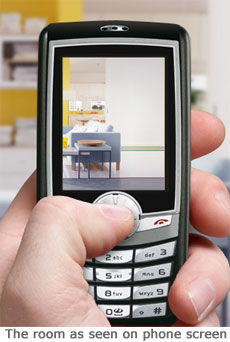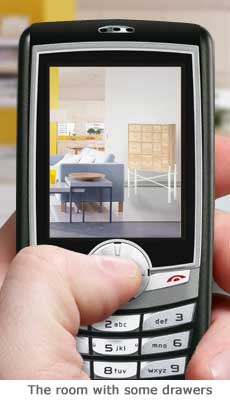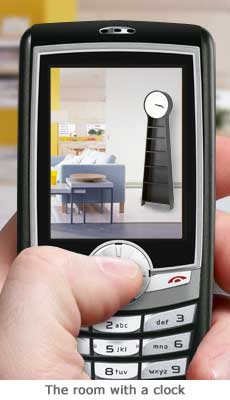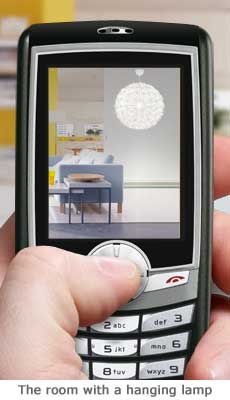Thanks WSJ for this post.
Northrop, IBM Use Virtual World as Setting for Training, Employee Meetings
By SCOTT MORRISON
When American soldiers and police officers from across the U.S. want to learn how to operate Northrop Grumman Corp.'s Cutlass bomb disposal robot, they go to the military contractor's secure Space Park installation.
But they don't have to jump in a car or hop on a plane to get there. That's because Space Park exists only in cyberspace, or more specifically, in the computer-generated world called Second Life.
Virtual reality "is not a fly-by-night technology. It's not a passing fad," says Matt Furman, a Northrop Grumman software developer who helped build Space Park, where customers can spend hours training.
Launched in 2003, Second Life burst onto the scene as an escapist's three-dimensional domain where colorful avatars -- digital alter egos that users create -- could travel and socialize with other "residents." But it hasn't lived up to the early hype among consumers and marketers.
Second Life averages about one million monthly users, a small number compared with other online services like social-networking site Facebook Inc.
But Second Life is getting a renewed lease on life as a setting for trade shows, employee meetings and other corporate events for the likes of Northrop Grumman, Cigna Corp., Intel Corp. and Wells Fargo & Co.
Linden Research Inc., the San Francisco company behind Second Life, is targeting business users with new products and services, including a feature that will let users call into virtual meetings from their cellphones. It is also testing hardware that companies can plug into their computer networks to create private virtual venues.
Such uses are a departure from Second Life's initial corporate appeal. Initially Second Life attracted the likes of Nike Inc. and Coca-Cola Co., which saw the three-dimensional world as a digital marketing test bed.
Nissan Motor Co., for example, built a virtual vending machine that dispensed cars that avatars could test drive, or even fly. But interest began to wane, Nissan says, and it pulled out of Second Life last year. "There were a lot of things competing for our marketing dollars," a spokesman says.
The marketers are being replaced by corporations that are using Second Life to host virtual conferences for employees or business partners.
Few have jumped in as deeply as International Business Machines Corp. Last year, IBM hosted an annual gathering of its leading thinkers in Second Life. The October event would have otherwise been scaled back because of the recession.
The three-day event, which peaked at about 250 concurrent users, helped demonstrate the promise of virtual reality to many IBMers who were still doubtful, says Neil Katz, one of IBM's distinguished engineers.
"We turned hard skeptics into skeptics and skeptics into true believers," he says, noting the venues have since been used for other IBM events.
After creating an avatar, Second Life allows users to gather in a virtual setting and speak using headsets or chat through text messages. Users can also share documents, watch presentations or draw on a white board.
Companies that don't have the technical capabilities of IBM can hire a virtual conference organizer like Dan Parks, a real-life conference planner who has created Virtualis, a Second Life "island" on which he has built a giant dome, various exhibit halls, ballrooms, an outdoor entertainment center and even a yacht.
"Anything your mind can imagine, we can create in here," Mr. Parks says. For about $7,000, he will run a two-day conference for 75 people from around the world. A similar event in real life would cost about $150,000, he says.
No one expects virtual events to supplant real life. Conference planners say virtual meetings work well when the aim is to share knowledge or train people, but they fall short when networking is the goal.
"Companies that are moving to virtual meetings need to think through why they are doing so. Saving money can't be the only reason to do so," says Joan Eisenstodt, a meetings and hospitality consultant at Eisenstodt Associates LLC.
The appeal of virtual events has strengthened in the recession. Event planners say a growing number of companies are using Second Life, as well as rivals ActiveWorlds Inc. and Forterra Systems Inc., to cut costs. IBM says it saved about $350,000 by hosting its October conference in Second Life.
While Linden isn't focusing solely on the corporate market, it is taking steps to make Second Life more business friendly, says Linden CEO Mark Kingdon.
For example, the company recently created a site to introduce Second Life to business users and it is redesigning the "first hour experience" to make it easier for users to create accounts. Linden is also planning to launch a service allowing people to call into virtual meetings from their landlines or mobile phones.

![Reblog this post [with Zemanta]](http://img.zemanta.com/reblog_e.png?x-id=798bb327-5fce-4d66-95d7-3055891413c4)
![Reblog this post [with Zemanta]](http://img.zemanta.com/reblog_e.png?x-id=ed9bd67a-3a0f-4067-94b9-484f96cad72c)








